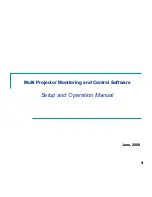
Drive arrays and fault-tolerance methods 121
Item
RAID 0
RAID 1+0 RAID 5
RAID 6
(ADG)
RAID 1(0)
(ADM)
Alternative name
Striping (no
fault
tolerance)
Mirroring
Distributed
Data
Guarding
Advanced
Data
Guarding
Advanced
Data
Mirroring
Formula for number of drives usable
for data (
n
= total number of drives in
array)
n
n
/2
n
-1
n
-2
n
/3
Percentage of drive space usable* 100%
50%
67% to 93% 50% to 96% 33%
Minimum number of physical drives 1
2
3
4
3
Tolerates failure of one physical drive No
Yes
Yes
Yes
Yes
Tolerates simultaneous failure of
more than one physical drive
No
Only if no
two failed
drives are in
the same
mirrored
pair
No
Yes
Only if no
three drives
are in the
same mirror
group
Read performance
High
High
High
High
High
Write performance
High
Medium
Low
Low
Medium
Relative cost
Low
High
Medium
Medium
Very high
*Values for the percentage of drive space usable are calculated with these assumptions: (1) all physical drives in the
array have the same capacity; (2) online spares are not used; (3) no more than 14 physical drives are used per array for
RAID 5; and (4) no more than 56 drives are used with RAID 6 (ADG).
Selecting a RAID method
Not all controllers support all RAID levels. To determine the RAID capabilities of your controller, see the
model-specific information for your controller on the HP website
(
http://www.hp.com/products/smartarray
).
Most important criterion
Also important
Suggested RAID level
Fault tolerance
Cost effectiveness
I/O performance
RAID 6
RAID 10 (ADM), RAID 1+0, RAID 50, RAID 60
Cost effectiveness
Fault tolerance
I/O performance
RAID 6
RAID 5 (RAID 0 if fault tolerance is not required)
I/O performance
Cost effectiveness
Fault tolerance
RAID 5 (RAID 0 if fault tolerance is not required)
RAID 10 (ADM), RAID 1+0, RAID 50, RAID 60
Alternative fault-tolerance methods
Your operating system may also support software-based RAID or controller duplexing.
•
Software-based RAID
resembles hardware-based RAID, except that the operating system works with
logical drives as if they were physical drives. To protect against data loss caused by physical drive
failure, each logical drive must be in a different array from the others.
•
Controller duplexing
uses two identical controllers with independent, identical sets of drives containing
identical data. In the unlikely event of a controller failure, the remaining controller and drives will service
all requests.












































